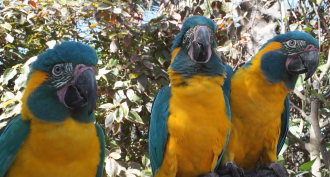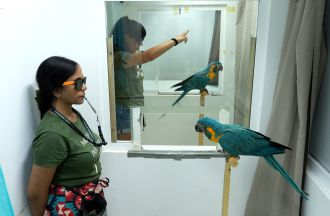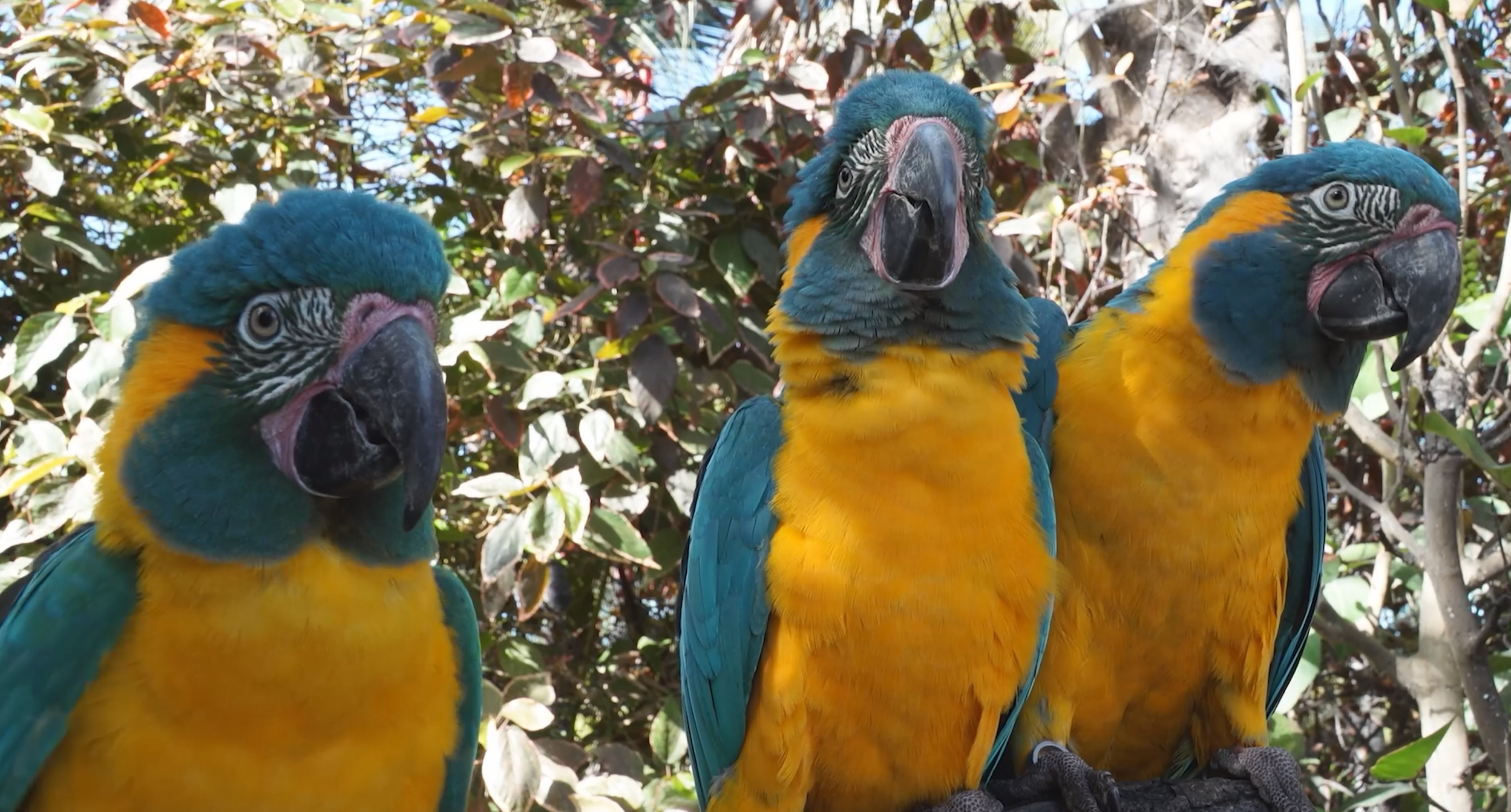Media release
From:
Zoology: Parrots can learn new tricks from their peers, like humans
Blue-throated macaws (Ara glaucogularis) can learn new actions by watching other macaws interact, suggests research published in Scientific Reports. The study indicates that this approach to learning — known as third-party imitation — is not exclusive to humans and may help to explain the nuanced group behaviours of macaws, which are highly sociable animals.
Third-party imitation is the ability to learn by passively observing interactions between two individuals, rather than through direct instruction. In humans, this skill is associated with the transmission of cultural practices and social norms. While second-party imitation — learning from a direct demonstration — has been observed in some animals such as quail, no previous research has found evidence for third-party imitation beyond humans.
Esha Haldar, Auguste von Bayern, and colleagues monitored 14 captive blue-throated macaws at Loro Parque Fundación in Tenerife. The study involved 12 experimental subjects and two demonstrator macaws, a trained pair of eight-year-old males. The researchers tested whether the experimental macaws could imitate a set of five actions after observing one of the trained macaws responding to gestures from a researcher. These actions included lifting one leg, spinning, and flapping their wings on command. A test group of six macaws observed these interactions and were then given the same commands, while a control group of five macaws received the commands without prior observation. The test group learned more actions than the control group and did so more quickly, responding to prompts like ‘lift one leg’ with twice the accuracy of their peers. Some birds in the test group also spontaneously imitated actions before receiving any commands or rewards.
The authors note that the small size of both the population of macaws sampled and the number of actions tested may limit the broader application of these findings without larger studies.
Multimedia








 International
International



